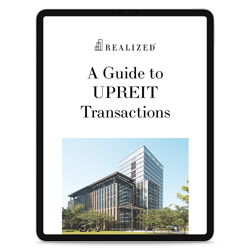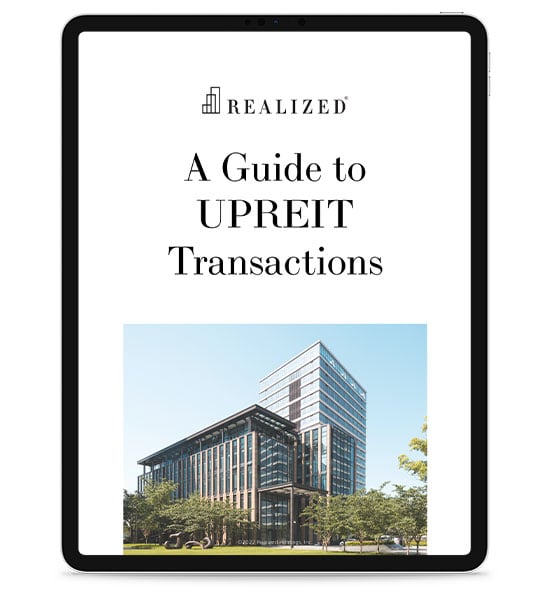
Real estate investment trusts (REITs) are common financial instruments that give solo investors access to large-scale commercial real estate. Many investors purchase equity in publicly-traded REITs as a means to add real estate to their portfolios without having to own and manage real property assets themselves.
Public REITs are traded on major stock exchanges, while private REITs are typically only offered to institutional and high-net-worth investors. Investors trying to value public REITs can pore over company financials and wade through annual 10-K reports like they would with any other publicly traded stock, but there is an additional metric that’s often used for determining the value of REITs.
Common Financial Methods for Valuing REITs
Traditional financial valuation metrics such as revenue, profits, earnings-per-share, and price-to-earning aren’t reliable methods to value REITs because all the assets within a REITs portfolio are depreciable. With other businesses, only certain assets, such as machinery and physical property, are depreciable over time, which doesn’t muddy the valuation and earnings outlook. Since REITs are able to depreciate their entire portfolios, it results in a significant tax deduction that reduces the REITs taxable income.
Other valuation methods, therefore, can paint a much clearer picture when valuing REITs.
One method is to look at a REIT’s funds from operations (FFO), which adds back the depreciation deduction.¹ However, funds from operations doesn’t account for capital expenditures, and real property requires near-constant maintenance. Adjusted funds from operations (AFFO) accounts for capital expenditures such as maintenance and repairs and is considered by many financial professionals as a much more accurate method of determining a REITs ability to pay dividends to shareholders.²
Another important valuation metric used to value individual REITs is NAV, or net asset value. NAV is an estimate of a private value for a REIT, so the typical share price of a REIT is compared to NAV per share to get a sense of whether the REIT is trading at a premium (expensive) or discount (cheap).
Other Methods Used for Valuing REITs
Financial metrics aside, there also are some key factors to consider when valuing REITs.
Many publicly-traded REITs focus on one sector of commercial real estate, such as healthcare, hospitality, retail, office, industrial/warehousing, or multifamily. Pandemic-related business shutdowns showed that some of these sectors are much more vulnerable to unforeseen economic pressures, as well as common cyclical real estate downturns, than others.
Retail, hospitality, and office are good examples. Retail businesses big and small were shuttered for a time in 2020, and when they were allowed to reopen, there were strict capacity limits in place. The hospitality sector suffered greatly, as did office properties due to the work-from-home transition brought about by the pandemic.
Meanwhile, other sectors flourished -- mainly industrial and warehousing, which saw its tide rise due to the surge in ecommerce and online shopping. Healthcare properties were incredibly busy, although senior and managed-care facilities struggled as the elderly proved much more susceptible to Covid-19 than younger Americans.
So when you are looking at REIT investment opportunities, consider the asset type, business occupying the property, and also the lease structure. Businesses with long-term leases are locked in and there are usually annual rent bumps included, which guarantees revenue for the REIT. Businesses with short-term leases might be more likely to close their doors in tough times, which could impact gross revenues in a strip center or shopping mall and wreak havoc with a REITs dividend payouts.
The Bottom Line
There are many different methods used to value REITs, and we’ve just touched on the basics. Try using different financial metrics, such as FFO and AFFO, to measure a REITs ability to pay dividends to shareholders and grow its portfolio of real estate assets. Other metrics to consider include the REITs payout and debt-to-EBITA (earnings before interest, taxes and amortization) ratios. The best way to value REITs likely uses a combination of all these important financial metrics.
Also, make sure you step back and take in the big picture. Does the REIT’s focus align with a sector of the economy that remains strong, or did it show resiliency through difficult economic times? These are just some of the methods investors can use to determine if a REIT meets their risk profile and investment strategies.
Sources:
1. REIT Investing 101: How to Value REITs, Millionacres, https://www.millionacres.com/real-estate-investing/reits/reit-investing-101/7-valuation-metrics-you-need-to-know/
2. How to Assess a Real Estate Investment Trust, Investopedia, https://www.investopedia.com/investing/how-to-assess-real-estate-investment-trust-reit/



